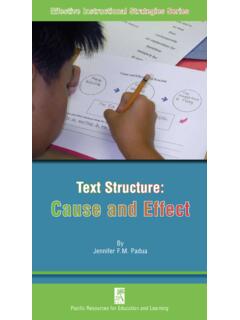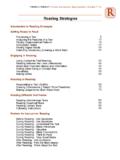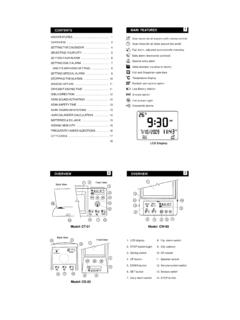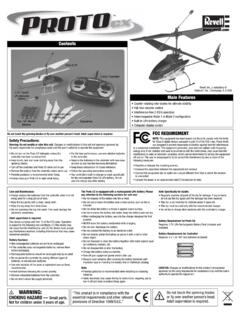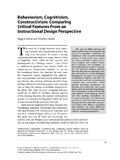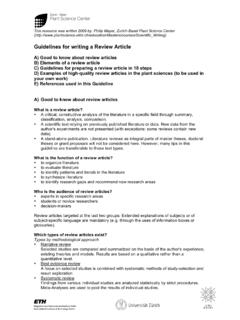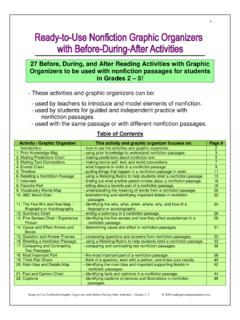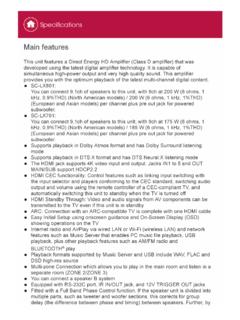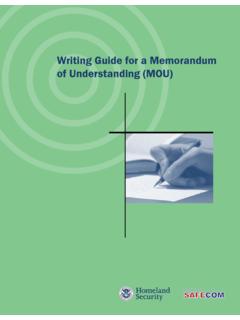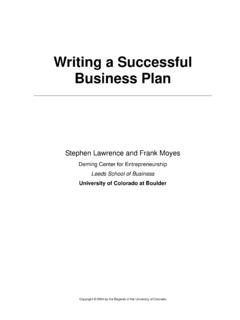Transcription of Text Features - PREL
1 Effective Instructional Strategies SeriesPacific Resources for Education and LearningText FeaturesBy Susan Hanson and Jennifer PaduaEffective Instructional StrategiesAcknowledgmentsSpecial thanks Gerald Duffy for his content review of this Roger J. Chesswas for his vision, support, and leadership in directing the Pacific CHILD Randomized Control Advisory Panel Members: Drs. Michael Kamil, Gerald Duffy, Anne Cunningham, Jana Echevarria, and Dorothy Strickland for their guidance during the Pacific CHILD M. Look for her contributions to this Arinaga, Joy Hirayama, and Megan Rhein for their staff members for their hard work and dedication with the Pacific CHILD Pacific CHILD Teachers in American Samoa, the Commonwealth of Northern Mariana Islands, and Hawai i: We appreciate all the learning opportunities and your commitments in helping us gather information on how to improve teacher knowledge and practice, and students reading Picture: Sharon M.
2 LookInterior photos by Jennifer PaduaThis product was funded by the Department of Education s Institute of Education Sciences (IES) under the Regional Educa tional Laboratory Pacific administered by Pacific Resources for Education and Learning, award number ED-06-CO-0024. The content of the publication does not necessarily reflect the views or policies of IES or the Department of Education nor does mention of trade names, commercial products, or organizations imply endorsement by the Features1 Text FeaturesContentsA Teacher s Story ..2 What are Text Features ? ..5 Why are Text Features Important? ..6 Teaching Text Features ..7 Assessment ..10 Connecting Text Features from Reading to Writing ..11 Overview of Key Steps ..12 References ..13 Appendices ..142 Effective Instructional StrategiesA Teacher s StoryWhen Mrs.
3 Cruz was in elementary school, she remembers starting a chapter in a textbook without even reading the title. She barely glanced at the pictures and skipped the captions. She never read the graphs or charts and skimmed the headings and subheadings without consciously thinking about the purpose of the information. Thinking back, Mrs. Cruz believed her goal was to read all the words and get through the chapter and not be slowed down by this extra stuff. I was one of those disengaged readers that closed the book at the end of the chapter and then said, There, I read it! The turnaround point for Mrs. Cruz was in middle school. One teacher showed her how to turn headings and subheadings into questions and then read the section in search for answers. Now a teacher, Mrs. Cruz has many 4th grade students in her class-room with the same lack of understanding of the important role text Features play in comprehending the text.
4 Using her knowledge from attending professional development sessions, reading professional arti-cles, and trying different strategies to emphasize how text Features sup-port comprehension, she plans her lesson. She knows the importance of reading the text before assigning it to her students in order to point out to students the text Features they should attend to. Text Features3I don t want my students missing the main point because they went through the motions of reading the words, but didn t engage with what was written, says Mrs. Cruz. I want students to get excited and prepared for reading the text by looking at all the pieces of information, such as pictures, captions, and headings to help focus on the topic. Recently, she overheard students discussing an assignment comparing animal and plant cells. She was pleased by what she heard and happy to know that her 4th grade students are realizing the value of text fea-tures now rather than in middle school like she did.
5 One of the differences between animal cells and plant cells is that animal cells have a cell wall, said Anthony. No, that s not true. Animal cells don t have a cell wall, exclaimed Tyler. Yes, they do! Anthony argues back. No! No, they don t. Look at the diagram on page A7, says Brittney. It even says it under the heading, Cell Parts, animals do not have a cell , Anthony responds sheepishly. 4 Effective Instructional StrategiesAs students progress through schooling, they are often faced with the challenges of comprehending informational and content area text. Informational texts are known for their use of text Features . When teachers make students aware of what text structures are available to them, they will then be able to show students how to use text Features . In this book, Effective Instructional Strategies: Text Features , we will take you on a teacher s journey to understanding the importance of teaching text Features and show you how to apply some of these activi-ties in the classroom and with your students.
6 All persons referred to are fictional framework for this book is the Pacific Communities with High-performance In Literacy Development (Pacific CHILD) Teachers Manual. Pacific CHILD is a professional development program that was tested in the Pacific region using a true randomized control trial design. The Pacific CHILD is a principles-based professional develop-ment program consisting of research-based teaching and learning strat-egies proven to help improve students reading comprehension using informational Features5 What are Text Features ? Text Features are the physical Features of the text that highlight the important content . Knowledge about text Features enables students to use them to improve their comprehension of the text. According to Kinder and Bursuck (1991), physical text that is well presented facilitates reading comprehension.
7 When students learn how to use text Features , they are able to make better predictions, anticipate their learning, and comprehend the content being studied (Kelley & Clausen-Grace, 2010.). Furthermore, when students gain understand-ing of how to use text Features and text structure as a strategy, their reading comprehension is improved (Dickson, Simmons, Kame enui, 1995).There are five broad categories of text Features found in informational texts :1. Text divisions identify how the text is organized and present-ed. Some examples are chapters, sections, introductions, sum-maries, and author information. 2. Organizational tools and sources of information help read-ers understand the information. Some examples are titles, table of contents, index, headings and subheadings, glossary, pro-nunciation guide, and references.
8 3. Graphics show information that is easier to understand because of its visual representation, or enhances what was written in the text. Some examples are diagrams, charts and tables, graphs, maps, labels, photographs, illustrations, paint-ings, cutaway views, timelines, and Font size or formatting style, such as boldface, italic, or a change in font signals the reader that these words are impor-tant. 5. Layout includes aids such as insets, bullets, and numbers that point readers to important information. (adapted from Fountas and Pinnell, 2006)Mrs. Cruz knows the primary purposes of teaching text Features are getting students to know what they are and how they can aid with understanding the text. She will begin by looking at the text to see if there are examples from each of the categories listed Instructional StrategiesWhy are Text Features Important?
9 The purpose of text Features is to help readers focus on the impor-tant information in the text. The teaching of text Features is important for a number of reasons. Using the visual Features of the text creates opportunities for teachers to build background knowledge for students prior to reading the main text body (Kelley & Clausen-Grace, 2010). The headings and subheadings are often part of informational text, which alert the reader to focus on the topic they will be reading about. In addition, students can change the subtitles into questions, and thus set a purpose for reading the section. Text Features present new material in meaningful chunks. In many cases, informational text is unknown material to the stu-dents and it is easier for them to process information in smaller chunks, such as the ones provided by the subheadings for each section.
10 Also, indexes and tables of contents guide the reader to look up pertinent information in an efficient way. Many content informational texts provide a glossary so stu-dents can immediately understand the meaning of words and see how they are being used in context. As Mrs. Cruz plans for her students to read Land of Fire by Brownlee (2005), she notices several text Features she would like to point out prior to reading. She will: Refer to the map to show where the Hawaiian Islands are located. Point out the picture of the lava, so students know what it looks like. Teach the bold words, such as plates and magma, since the meaning of these words are so critical to comprehending the text. Point out the glossary box for students to refer to if they have difficulty remembering the meanings.

